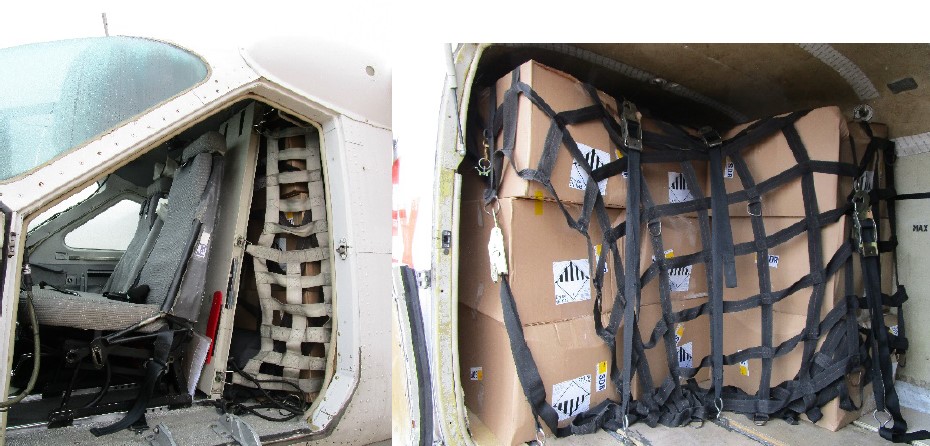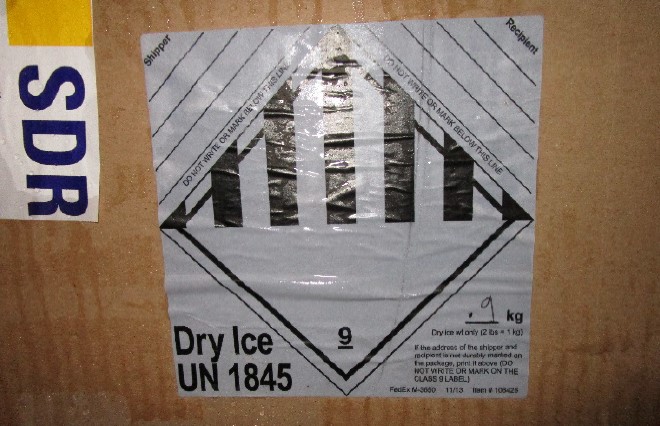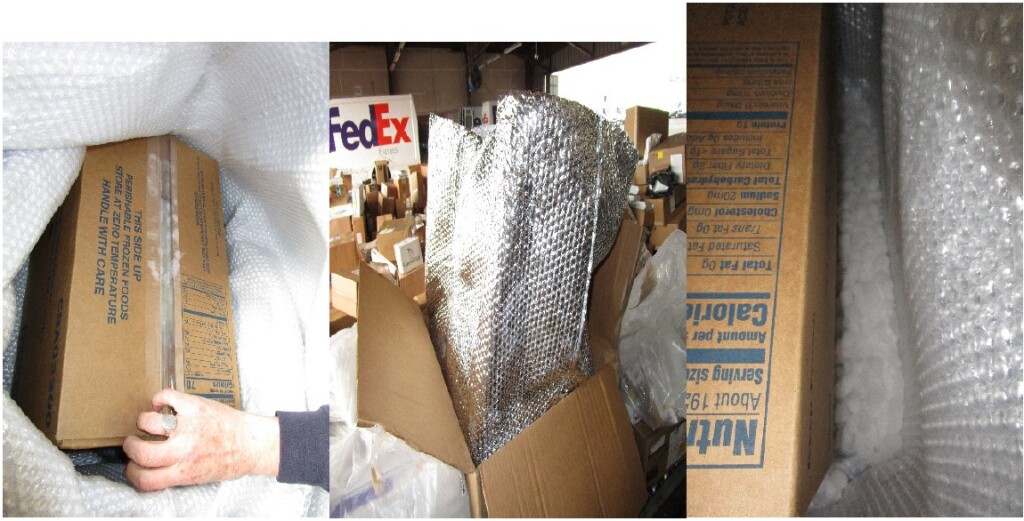Dry Ice Packaging Error Incapacitated Pilot on Taxiway (West Air Cessna C208B N781FE)
On 23 November 2018 the pilot of Cessna 208B N781FE, operated by West Air for FedEx, became incapacitated shortly before take-off at Meadows Field Airport (BFL), Bakersfield, California in a dangerous goods incident.
The US National Transportation Safety Board (NTSB) has so far only published a preliminary report but did release the public docket on 23 March 2022.
The Incident
The aircraft was being operated single pilot. It landed at the airport at 16:10 Local Time and taxied to the FedEx ramp were FedEx personnel loaded cargo into the cabin.
There were 41 boxes, marked as containing a total of 36 kg of dry ice (frozen CO2), among the cargo.
A FedEx dangerous goods representative had approved the shipment as the dry ice mass furnished by the shipper was below the company’s limit of 76 kg for the C208B.
The pilot stated that he infrequently flies with dry ice and when he does, he usually only has about 10 boxes with him (also at 0.9 kg per box) and usually places them in cargo zones 5 or 6 (near the back), not zones 1, 2, and 3, which are located right behind him. On the of the incident, the packages were placed behind the cockpit in zones 1, 2, and 3 for even weight and balance distribution.
After the loading was completed, the pilot finished his paperwork and started the aircraft at 17:29. The evening was cool and so the pilot closed the ventilation.
While taxing to runway 30R the pilot felt “strong sleepiness” accompanied by difficulty breathing. He stopped the aircraft at the runway run-up area and momentarily closed his eyes.
Remarkably only after the pilot had failed to respond to repeated calls from air traffic for c20 minutes, did aid reach the aircraft. A firefighter on reaching the aircraft observed “an occupant with his head rolled back and his mouth open”.
The fire service chocked the aircraft and shutdown the engine. The pilot was brought round by a ‘sternal rub‘ but initially his speech was unintelligible. Shortly after “he was able to demonstrate to the firefighter that he was coherent by answering a series of relatable questions”.
Safety Investigation
The boxes were found to be damp but in good condition. Some had frost on them. An FAA Inspector reported:
Outer box had shipping and hazmat label, inside that box was thermal wrap/bag (see pics) which was basically bubble wrap with a Mylar coat, inside the thermal bag was the food product box and loosely placed dry ice pellets. The thermal bag was folded over and loosely taped closed.
A driver/check-in clerk at a specialist food shipment company was interviewed by NTSB. They had worked in that post for 5 years and “also supported packing when the company needed help”.
According to his understanding of the dry packing process at the time, for boxes that required 0.9 kg, he would place one and a half scoops of dry ice in the insulated packaging surrounding the box. They discovered after the incident that this was consistent with 3-4 lbs of dry ice instead of the 2 lbs prescribed by the label on the side of the box. For larger boxes, he would use 2 scoops of dry ice.
The NTSB comment that:
FAA calculations showed that the actual dry ice load was closer to 76.6 kg (169 lbs).
So this was factionally over FedEx’s C208 limit of 76 kg. A detailed study concluded:
Without adequate ventilation, the amount of CO2 produced by the sublimation of dry ice can quickly become dangerous in an aircraft.
Assuming there was no exchange of air with the outside and that the 76.6 kg of ice was sublimating at a rate of 2%/hour, the concentration of CO2 in the cabin would have exceeded the OSHA and FAA limit in less than five minutes. After 30 minutes, the concentration would have exceeded 6% CO2.
The NTSB did confirm that the C208 ventilation system could adequately vent the CO2 produced by 76.6 kg of dry ice in-flight with sufficient vents open but did not have the data to assess its performance on the ground.
The NTSB medical analysis was that:
…the signs and symptoms the pilot had on the day of the incident as well as results of medical testing all pointed to a diagnosis of carbon dioxide poisoning from dry ice in the plane as the cause of the event.
On 5 March 2019 the same pilot picked up a shipment of dry ice in Visalia, California:
After he picked up the shipment, he closed the door, started to taxi, but started to experience the same symptoms as he did during the incident in November; hard to breathe and had difficulty keeping his eyes open. The CO2 detector that had been recently issued to him by the operator indicated 4,000 parts per million (ppm), so after about 200 ft he taxied the airplane back to the ramp and felt it harder to breathe. As he taxied the airplane back the detector showed 7,800 ppm.
UPDATE 1 April 2022: NTSB Probable Cause
The pilot’s loss of consciousness while taxiing due to an accumulation of toxic levels of carbon dioxide gas inside the airplane as a result of dry ice sublimation.
Also causal was [sic] the pilot’s decision to fly the airplane in an unventilated configuration, the operator’s policy that allowed this configuration, and the shipping company’s inadvertent loading of excess dry ice, which exacerbated the concentration of carbon dioxide.
Safety Resources
You may also find these Aerossurance articles of interest:
- Canadian Mining Air Accident (Cessna 208B Caravan)
- Iced C208 Loses Airspeed During Circling Approach and Strikes Ground
- Costa Rican C208B Stalled While Trying To Avoid High Ground
- HEMS Pilot Seizure While Rotor-Running
Aerossurance is delighted to sponsor the European Society of Air Safety Investigators (ESASI) Regional Seminar 2022 in Budapest, Hungary 6-7 April 2022.





Recent Comments